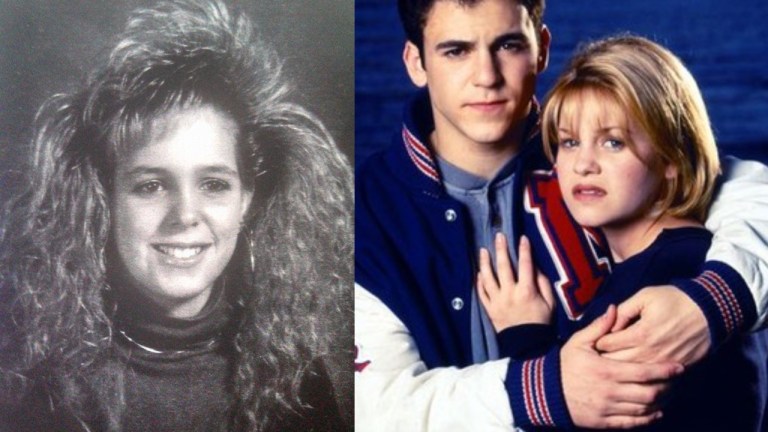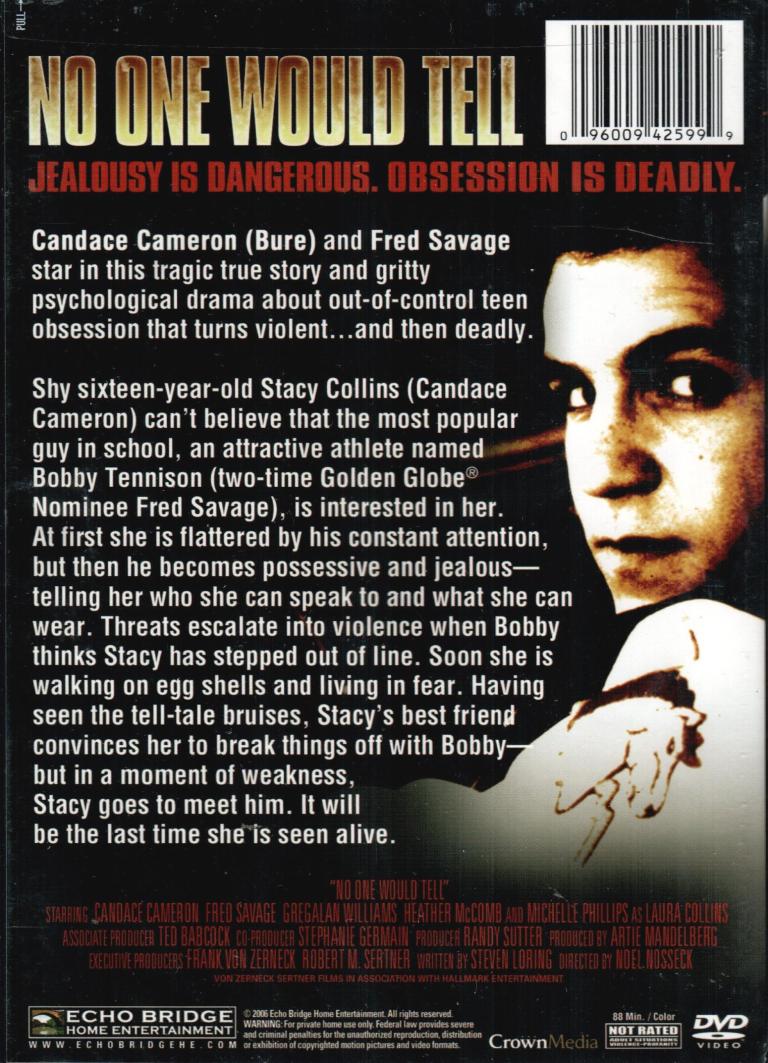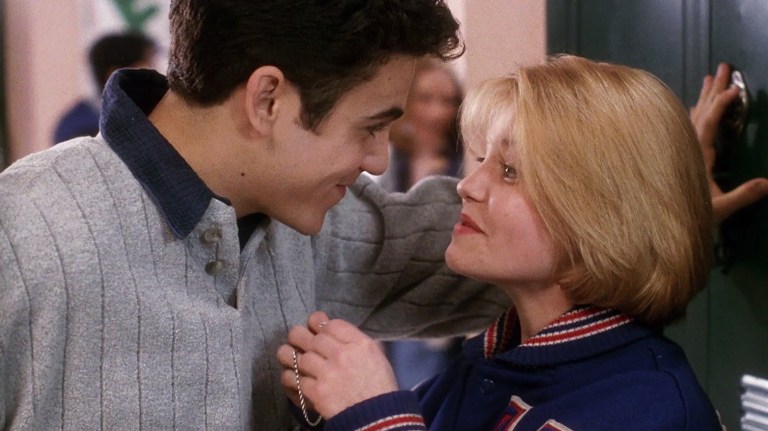Is the Iconic Television Movie ‘No One Would Tell’ (1996) Actually Based on a True Story?
Two squeaky clean teen stars (Fred Savage and Candace Cameron Bure) shocked us all with how quickly an abusive high school relationship can escalate to murder.

A lot of us found our way into horror by watching creepy made-for-television films along with reruns of crime shows like Unsolved Mysteries and America’s Most Wanted in the era before streaming made quality TV a round-the-clock affair and you pretty much had to watch whatever was on. One TV movie everyone who grew up in the 90s will remember is the 1996 teen crime drama No One Would Tell starring squeaky clean teen icons Candace Cameron Bure and Fred Savage. At the time Cameron Bure was famous for playing DJ Tanner on Full House and Savage was better known as Kevin Arnold from The Wonder Years.

No One Would Tell portrays the relationship between shy 16-year-old Stacy Collins (Cameron Bure) and popular wrestler Bobby Tennison (Savage) who is two years older than her. Stacy is surprised when Bobby takes an interest in her and is too flattered to recognize the red flags when he becomes possessive after only a few weeks of dating. He also begins to isolate her from her friends and family and forces her to wear a pair of his sweatpants when she wears a skirt to school one day.

The relationship escalates to physical abuse and Stacy’s friends and family are able to convince her to break up with Bobby. However, like real life intimate partner violence, Bobby continues to physically abuse Stacy even though they are broken up. He convinces Stacy to hear him out and they drive to a lake to talk. Stacy never returns home. Later, Bobby admits to police that he murdered Stacy when she refused to get back together with him and they find her body in the lake. At trial, Bobby is sentenced to life in prison and the judge warns Stacy’s friends to intervene earlier the next time they witness abuse.
Young people may not know that we are still in the midst of a cultural shift of viewing abuse as something that should be stopped instead of a “private family matter” that should be ignored. In American history, if violence did escalate to where outside intervention happened, it was because the abuser was disturbing the peace of the community, it wasn’t enough that an individual was being victimized. Beating your wife was a normal part of marriage that was codified by law in cases like State v. Bradley which established a positive right to wife-beating, and male victims were pretty much just ignored altogether. It’s only been since the 1990s that most legal systems around the world have made small steps towards protecting victims and prosecuting abusers.

The 90s were a time of “girl power” where women and girls spoke out against rape, abuse, sexual harassment and sexism as part of the third wave of feminism. In 1991 women watched as Anita Hill testified before an all-male, all-white Senate Judiciary Committee that then Supreme Court nominee Clarence Thomas sexually harassed her. Thomas was confirmed to the court, but Hill inspired other women to speak out against their abusers rather than suffer in silence. This was the backdrop against which a slew of popular made-for-television movies highlighting women’s issues were made including No One Would Tell (1996), She Fought Alone (1995), The Amy Fisher Story (1993), She Cried No (1996) and Mother, May I Sleep With Danger? (1996).

No One Would Tell is based on the real life story of Amy Carnevale, a 14-year-old girl who was murdered by her 16-year-old ex-boyfriend, Jamie Fuller, on August 23, 1991, in Beverly, Massachusetts. Accompanied by two of his friends, Fuller led Carnevale to a field and told her he loved her before stabbing her, slashing her throat, and stomping on her head. He and his friends then weighed Carnevale’s body down with cinderblocks and dumped her in a pond, just like in No One Would Tell.
Like in No One Would Tell those around Amy Carnevale noticed that Jamie Fuller was mistreating her. He’d told Amy and his friends that he thought he would kill her one day out of jealousy. After Amy went to the beach with friends, Jamie decided to murder her and even told his friends about his plans, saying “I’m getting sick of this. I swear I’m going to kill her….This shit’s got to stop…She won’t be around to go out with anyone any more…I’m going to fucking kill her.”

Jamie’s friends told him “You don’t have the balls to do it” to which he responded, “You’ll see.” After the murder they went home so Jamie could clean up the knife he used to murder Amy. The boys joked that the Kool-Aid they were drinking looked like blood and was “right for the occasion“. Jamie Fuller was convicted of first-degree murder and sentenced to life without parole. However, a new law concerning teens sentenced to life in prison means that Fuller has been up for parole and may be released one day. Updates are posted to the Justice for Amy Carnevale Facebook page.
No One Would Tell was remade in 2018 with Shannen Doherty playing the protagonist’s mother.
